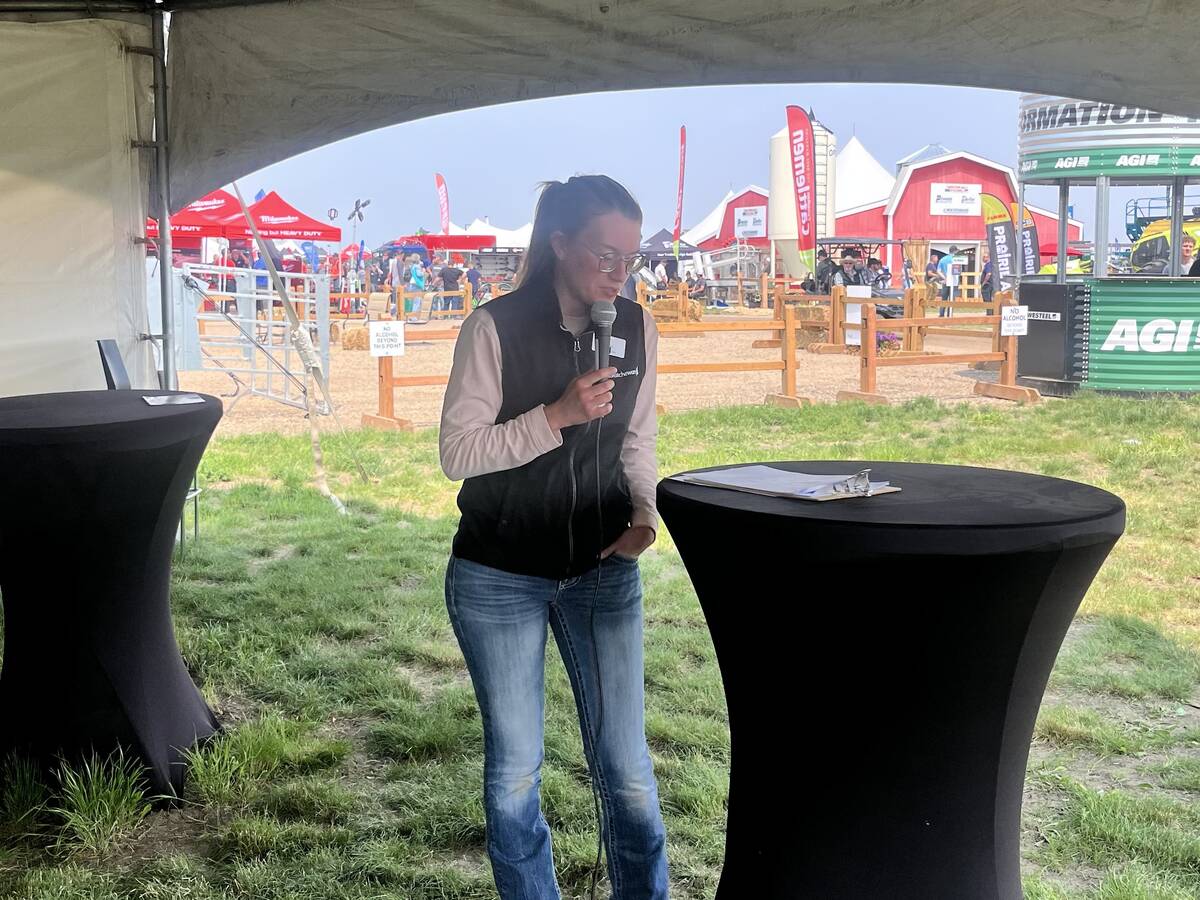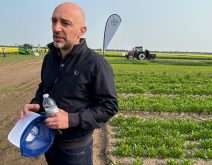Sixty Saskatchewan field samples taken last fall to test for clubroot have come back negative, and canola growers would like to keep it that way.
“The strategy that we’re recommending would prevent it,” said Faye Dokken-Bouchard, the provincial plant disease specialist who heads the Saskatchewan Clubroot Initiative, which last year developed a clubroot management plan to prevent the soil-borne disease from taking hold in the province..
Clubroot is primarily spread by spores in the soil, which are moved by wind, water, animals, shoes, clothing and vehicles, including farm machinery.
Read Also

Ag in Motion speaker highlights need for biosecurity on cattle operations
Ag in Motion highlights need for biosecurity on cattle farms. Government of Saskatchewan provides checklist on what you can do to make your cattle operation more biosecure.
It has been found around the world for hundreds of years, but was first discovered in western Canadian canola in 2003 near Edmonton. It has since been confirmed in 15 Alberta counties.
The closest it has come to Saskatchewan is Cypress County in eastern Alberta.
In Saskatchewan, one of 30 samples collected in 2008 tested positive for the pathogen. The crop showed no symptoms but the pathogen’s DNA was found in the soil.
Dokken-Bouchard said growers seem to have kept a close eye on their canola the last few years, seeking advice and inquiring about unusual-looking plants.
“There are some lookalikes,” she said.
For example, some chemicals can cause malformed roots, which are the most identifiable symptom of clubroot.
Keys to prevention are proper crop rotation and sanitation:
- Susceptible crops, including clubroot-resistant canola, should be planted no more than once every four years. Producers who push that rule are taking a chance that the pathogen will adapt.
The resistance in these varieties is not 100 percent, and new types of clubroot could develop if the rotation is too tight.
Even a four-year rotation won’t necessarily prevent the disease from occurring, but it will limit its growth.
- Traffic to, from and within fields should be limited to prevent soil contamination.
Dokken-Bouchard said farmers can’t control all access to their fields but those in the industry should know to stay out.
“Be aware of the risks. And if you don’t drive in, you don’t have to clean your vehicle.”
The provincial management plan suggests that farmers ask drivers where their vehicles and equipment have come from and what sanitation measures have been taken.
Cleaning may include removing soil and crop debris, washing equipment with a power washer using hot water or steam misting with a bleach solution of one or two percent, and a final rinse.
If an infestation occurs near the only field access, producers should consider seeding perennial grass in that area and creating a new access as far away as possible.
- Reducing tillage will reduce the spread by limiting exposure to wind and water.
- Clubroot spores can survive livestock digestion, and producers should avoid using feed or manure from suspected areas.
The deformed roots of clubroot-infected plants can’t absorb water and nutrients as they should, leading to crops that are stunted, prematurely ripe and containing shriveled seeds. An early infection can result in great yield loss.
Saskatchewan has also declared clubroot a pest, which allows rural municipalities to enforce control measures, including allowing pest control officers to enter and inspect land.
Dokken-Bouchard said the dry weather this spring could limit the spread and severity of infection.
For more information, visit www.clubroot.ca.

















